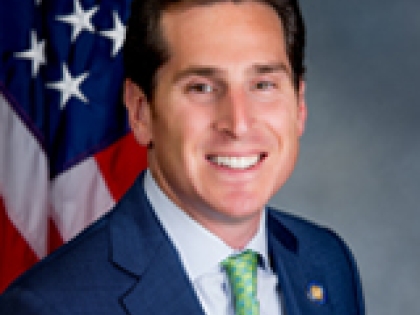
Facing $1.1 million state aid shortfall, CHSD prepares status-quo budget
The cuts were coming.
Facing a $15 billion budget deficit, New York state has allocated $27.1 million in state aid to the Valley Stream Central High School District under Gov. Andrew Cuomo’s 2021-22 executive budget proposal. Excluding building aid, the district is set to receive $1.1 million, or nearly 4 percent, less in state funding over the current year. The executive budget was released Jan. 19.
A shortfall was anticipated, according to Acting Schools Superintendent Dr. Wayne Loper, with the economic fallout of the coronavirus continuing to ravage state finances. The district will propose a status-quo spending plan of $129 million to the public in the coming weeks.
While building aid for construction related to a $41 million bond that the district issued in 2016 would make up the loss in state aid elsewhere, Loper said, “that’s still $1.1 million less than we had expected to receive.”
Full budget details are not yet available, but Loper said the spending plan would include some additions to student counseling services and improvements to remote learning. Otherwise, he said, parents and students would see no material change to programs and services.
“We knew we had a tight budget coming because we’ve been living in this coronavirus world for quite a long time now,” Loper said. “We’re very cognizant of the impact the pandemic has had on the residents.”
At $129 million, high school district spending is set to increase around $3 million over the current-year plan of $126 million.
District 30 was the only other Valley Stream school district to see a loss in state aid for the upcoming year, with a reduction of nearly $150,000 from its allotment of $12.2 million for the current year. Districts 13 and 24 are set to see an increase of $570,000, or nearly 2.8 percent, and roughly $276,000, or 2.6 percent, respectively.
State Sen. Todd Kaminsky, a Democrat from Long Beach, said the executive budget assumes New York would receive only $6 billion in federal aid from the Cares Act, which U.S. lawmakers passed last March, to make up the state budget deficit.
Whether schools receive additional funding when state lawmakers pass their final budget will depend on Washington’s next moves, he said.
“We know we have a $15 billion deficit, and if we get $15 billion funding in the next Covid relief bill, the school funding will be restored,” he said. “The first question is how much federal money will we get.”
Timing, Kaminsky said, will be critical. With an April 1 deadline to submit a final state spending plan, any federal aid promised would need to come before then.
“We’re not sure how fast Washington will get to it,” he said. “Right now our budget situation is in really poor shape. We’re hoping Washington does the right thing.”
With federal unemployment benefits set to expire in mid March, however, Kaminsky said he anticipated a deal before then. Still, he said, with state budgets typically negotiated through January, February and March, “that’s a very tight turn around.”
At that point, he said, “It’s important for the new Senate majority to make sure Long Island gets its fair share, and we’re going to fight for it.”